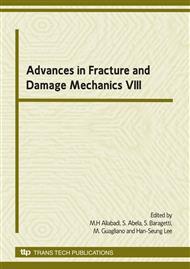p.825
p.829
p.833
p.837
p.841
p.845
p.849
p.853
p.857
The Microstructure Evolution in Fused Region and Taper Region of Fibre Coupler
Abstract:
The fused region and the taper region of the optical fibre coupler were tested by atomic force microscopy (AFM) and scanning electron microscopy (SEM), respectively. The results indicated that the surface roughness increased after fused biconical taper (FBT), that is, the fused region possessed the highest toughness (about 70nm), the taper region is in a second position (about 40nm), and the bare fibre was relatively the lowest (about 10nm). Micro crystals were observed at the fused region and the amount of the micro crystals decreased with increasing the drawing speed. Micro cracks were observed at the taper region and the micro cracks became wide and deep with increasing the drawing speed. All these changes affected not only the optical performance such as excess loss and consistence, but also the reliability and stability. Therefore a fibre device with high quality required small drawbacks.
Info:
Periodical:
Pages:
841-844
Citation:
Online since:
October 2009
Authors:
Keywords:
Price:
Сopyright:
© 2010 Trans Tech Publications Ltd. All Rights Reserved
Share:
Citation:


